
FS-1029 | February 2020
The Right Tree for Your Lawn-Planting Trees to Help Improve Chesapeake Bay Water Quality
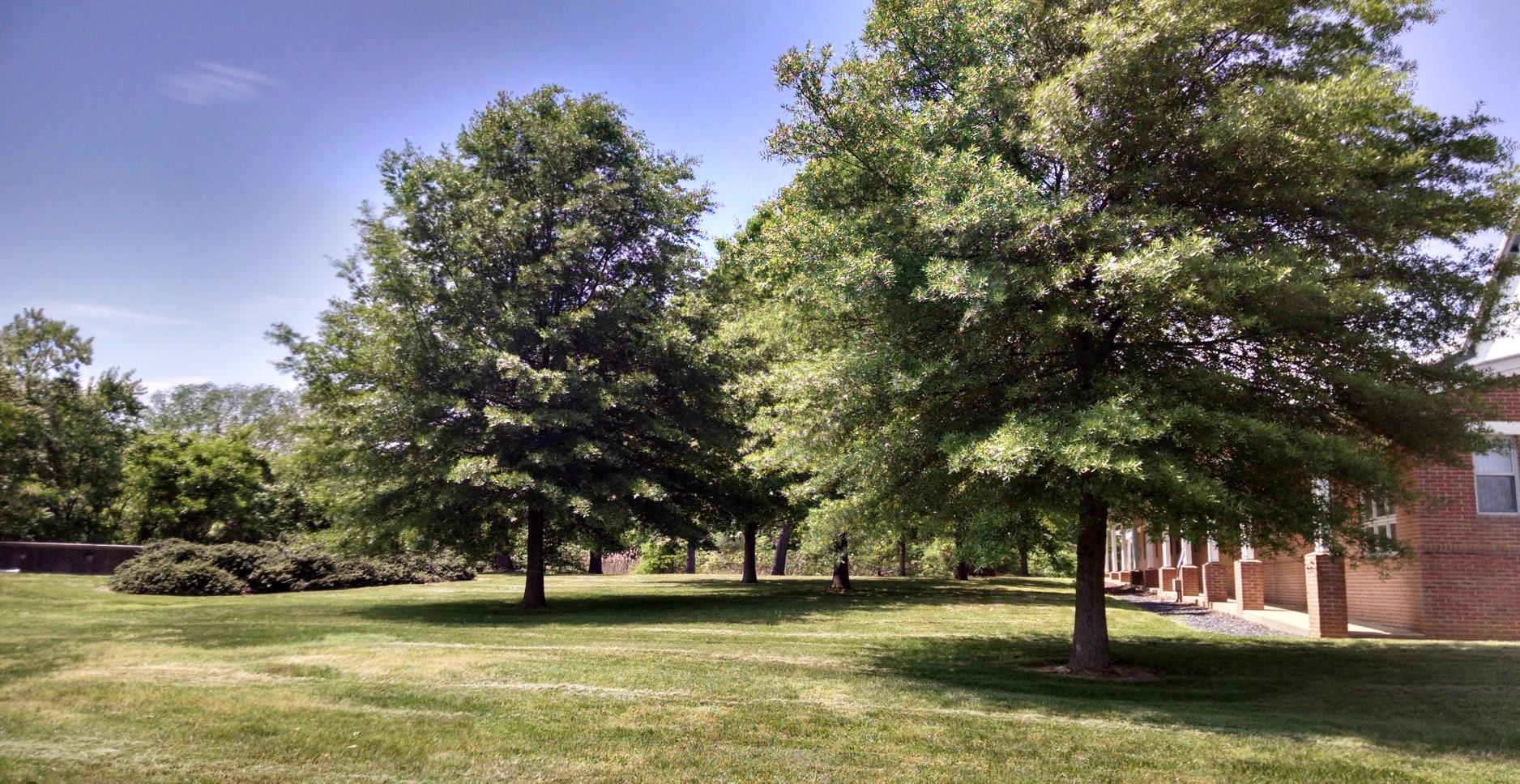
Everyone has a role in restoring water quality in the Chesapeake Bay and what better way to help than by planting trees? It is easy to forget just how much we depend on trees. They provide life-giving oxygen and food, regulate temperatures, sequester carbon, and yield raw materials for building. Trees also are a source of simple beauty, season by season, year after year.
Trees utilize nutrients as they grow. If you look at the cost of buying and maintaining trees, they are a pretty good bargain when it comes to improving water quality in the Chesapeake Bay.
Trees Come in all Sizes, Shapes, and Colors, so How do I Decide on What to Plant?
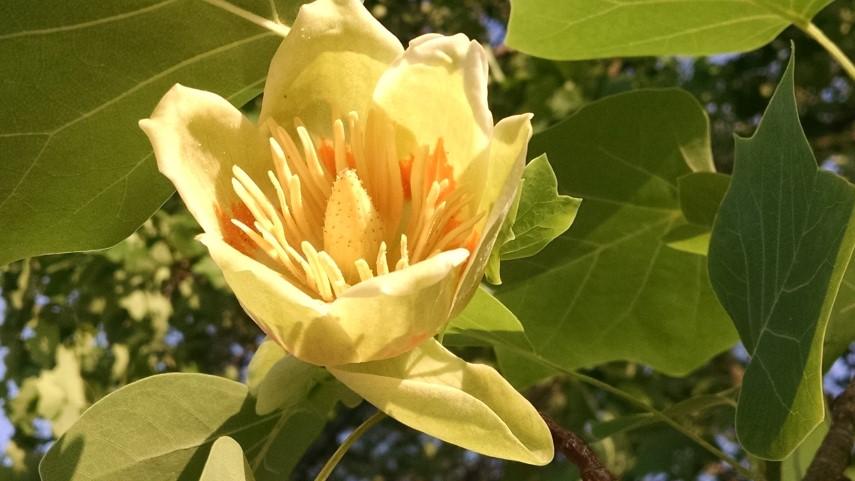
Consider where you want to plant your trees and how big they will grow. Avoid planting too close to sidewalks, driveways, foundations, septic systems, as roots can buckle concrete or asphalt or get into a septic field. Do not plant under utility lines since limbs can interfere with power lines.
If you are looking for trees that can serve as a privacy screen, consider ones that are evergreen and/or do not grow as tall. If you want trees to shade your house to reduce summer temperatures and decrease energy usage, consider species that have a wide crown and grow quickly. As a tree grows, it should not restrict visibility near intersections or driveways. Think about any spring flowers the trees might produce or the color of their fall foliage.
Your Budget and the Number of Trees You Intend to Plant Will Determine What Size Trees to Buy
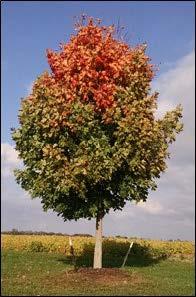
Whether you are purchasing native species of trees (Table 1) from a local nursery or online, you will need to know what size and quantity to buy. Table 2 summarizes some of the advantages and disadvantages of each type of tree. For large areas such as a field, bare root seedlings may be the most cost effective choice. They are inexpensive, easily transported, and simple to plant. However, seedlings also are easily mowed over and prone to animal predators, such as deer. Tree tubes or flags may be necessary to minimize damage.
|
DRIER |
SOIL MOISTURE |
WETTER |
||
| Chestnut Oak | American Wild Plum | Alternate-leaf Dogwood | Loblolly Pine | Atlantic White Cedar |
| Common Persimmon | Chinquapin Oak | American Beech | Pin Oak | Bald Cypress |
| Eastern Chinkapin | Eastern Redbud | American Holly | Red Maple | Black Gum |
| Eastern Red Cedar | Eastern White Pine | Choke Cherry | Serviceberry | River Birch |
| Pitch Pine | Pignut Hickory | Common Hackberry | Silver Maple | Swamp Cottonwood |
| Southern Red Oak | Slippery Elm | Sugar Maple | Sweet Gum | Swamp White Oak |
| Virginia Pine | White Oak | Tulip Poplar | Willow Oak | Sweetbay Magnolia |
| Type | Approx. Cost | Approx. Height | Advantages | Disadvantages |
|---|---|---|---|---|
| Bare Root Trees | $1.00 to $10.00 | 1’ to 2’ | Inexpensive for large areas. Easily planted. | Easily mowed over. Dry out quickly. Eaten by animals. |
| Small Container | $2.00 to $30.00 | 2’ to 4’ | Inexpensive. Easy to transport and plant. | Easily mowed over. Can be root-bound in the container. Some animal damage. |
| Large Container | $15.00 to $100.00 | 4’ to 8’ | Relatively easy to transport and plant. | Larger hole required than smaller types. Can be root-bound in the container. |
| Balled and burlapped | $30.00 and up | 6’ on up | Larger size gives a mature appearance to a project. | Requires a large hole for planting. Larger sizes are difficult to transport. Costly to |
Small container-grown trees such as quart or gallon containers, are relatively inexpensive and easily transported. Larger container-grown trees, such as 10-gallon ‘pots’ are more costly and difficult to transport. Larger balled and burlapped trees can be very heavy and you may need additional assistance or special equipment to transport and plant them.
How You Plant Your Tree is as Important as What You Plant
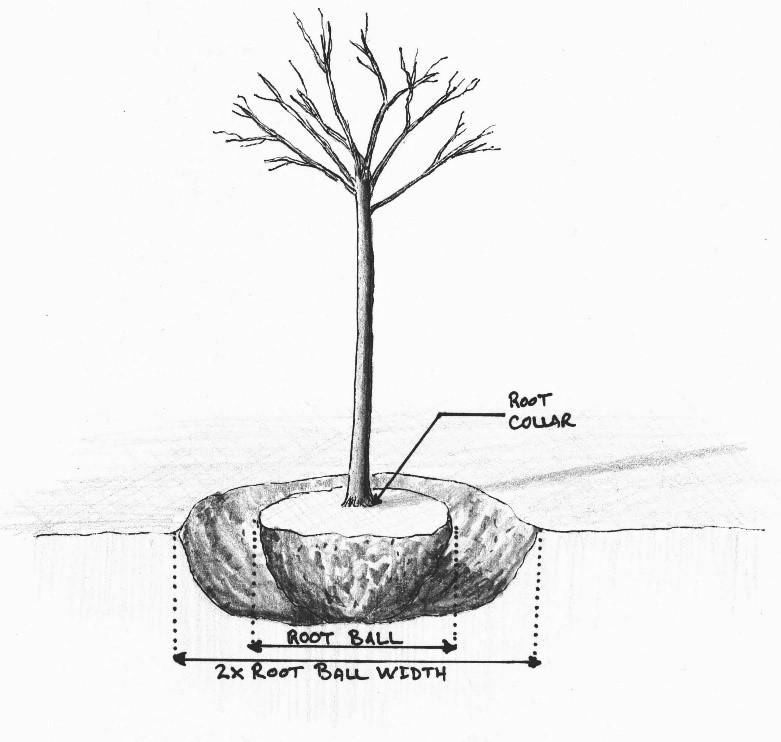
- Dig a hole. A good rule-of-thumb is to dig the hole at least twice the size of the container. It is better to slope the sides of the hole because it is easier to adjust the tree’s position in the hole and properly pack the soil around the roots. The hole should not be deeper than the “root collar” which is the point at the base of the where tree begins to widen out (figure 1). The root collar indicates where the top of the soil was while the tree was growing at the nursery.
- Prepare the tree. It is important to keep bare root trees moist until ready for planting. While you are digging the hole, you can place them root side down in a bucket of water for up to 3 hours to prevent the roots from drying out.
Place container-grown plants next to the hole on their side and gently press on the outside of the container to make it easier to remove the tree. Once out of the container, break up the soil and root matrix that formed while the plant was in the container before filling the hole. This will ensure maximum root contact with the soil.
If the roots remain wrapped in the shape of the container on smaller plants, use a knife or garden trowel to score it evenly around the sides and in an X on the bottom to free up the roots (figure 2).
- Set the tree. Place the tree at the bottom of the hole in the center. You may need someone to hold bare root or balled and burlapped trees in place and straight. Dig out or fill in the hole until the root collar is even with the top edge of the hole.
- Replace the soil. Once the hole is the right depth, gently place the soil back in the hole making sure there are no large clumps of soil or air pockets around the root ball. Periodically press the soil firmly into place, especially against the roots to ensure there are no open areas which can affect the roots or cause the soil to slump.
As you fill in the hole, make sure the tree remains vertical. If it needs to be adjusted, compact the soil again after it has been moved. Once you completely fill in the hole, water the tree until the soil is saturated.
- Mulch around the tree. Mulch helps reduce weed growth and maintain soil moisture. Once the water has soaked into the ground, place a 2 to 3-inch deep layer of mulch around the tree. Do not place mulch up against the base of tree since this can affect bark development and create an environment where certain insects and fungus can damage the tree. It is best to leave an area about 3 to 4 inches wide around the trunk with no mulch.
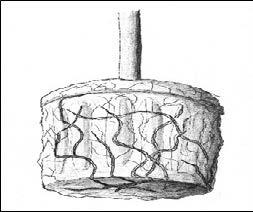
Your Tree will Need Regular Watering to Survive
- Watering. Until the roots become established, be sure to gently water the tree regularly during the growing season, especially during hot, dry periods. During the first year, weekly watering of approximately 1 inch is recommended. Apply the water slowly to allow it to soak into the soil, ensuring that the soil is moist and the water gets down to the roots. Overwatering can make the soil loose and may harm the tree.
- Fertilizing. University of Maryland Extension does not recommend fertilizing newly planted trees.
- Staking. The decision to stake a newly planted tree depends on its size. Larger trees are more easily affected by wind. If you stake your tree, do not use uncovered rope or wire that can cut into the bark. The University of Maryland Extension Home and Garden Information Center has a fact sheet (HG 24 - Planting Tips for Trees) that offers information on tree staking dos and don'ts.
- Pruning. Each tree species responds differently to pruning so it is best to consult with the nursery where you bought the tree or with a professional arborist before pruning.
Additional Resources
- University of MD Extension Home and Garden Information Center. https://extension.umd.edu/resource/trees-and-shrubs-home-garden
- Arbor Day Foundation, How to Plant Your Trees. http://www.arborday.org/trees/planting/
- MD Dept. of Natural Resources Trees webpage. http://www.dnr.state.md.us/forests/Pages/default.aspx
- Slattery, Britt E., Kathryn Reshetiloff, and Susan M. Zwicker. 2003. Native Plants for Wildlife Habitat and Conservation Landscaping: Chesapeake Bay Watershed. U.S. Fish & Wildlife Service, Chesapeake Bay Field Office, Annapolis, MD. 82 pp. https://www.fws.gov/sites/default/files/documents/native-plants-for-wildlife-habitat-and-conservation-landscaping-in-the-chesapeake-bay-watershed.pdf
ERICK BUEHL
ebuehl@umd.edu
JENNIFER DINDINGER
dinding@umd.edu
AMANDA ROCKLER
arockler@umd.edu
JACQUELINE TAKACS
KRISZTIAN VARSA
This publication, The Right Tree for Your Lawn-Planting Trees to Help Improve Chesapeake Bay Water Quality (FS-1029), is part of a collection produced by the University of Maryland Extension, Watershed Protection and Restoration Program within the College of Agriculture and Natural Resources.
The information presented has met UME peer-review standards, including internal and external technical review. For help accessing this or any UME publication contact: itaccessibility@umd.edu
For more information on this and other topics, visit the University of Maryland Extension website at extension.umd.edu
University programs, activities, and facilities are available to all without regard to race, color, sex, gender identity or expression, sexual orientation, marital status, age, national origin, political affiliation, physical or mental disability, religion, protected veteran status, genetic information, personal appearance, or any other legally protected class.
When citing this publication, please use the suggested format below:
Buehl, E., Dindinger, J., Rockler, A., Takacs, J., & Varsa, K. (2020). The Right Tree for Your Lawn-Planting Trees to Help Improve Chesapeake Bay Water Quality (FS-1029). University of Maryland Extension. go.umd.edu/FS-1029.